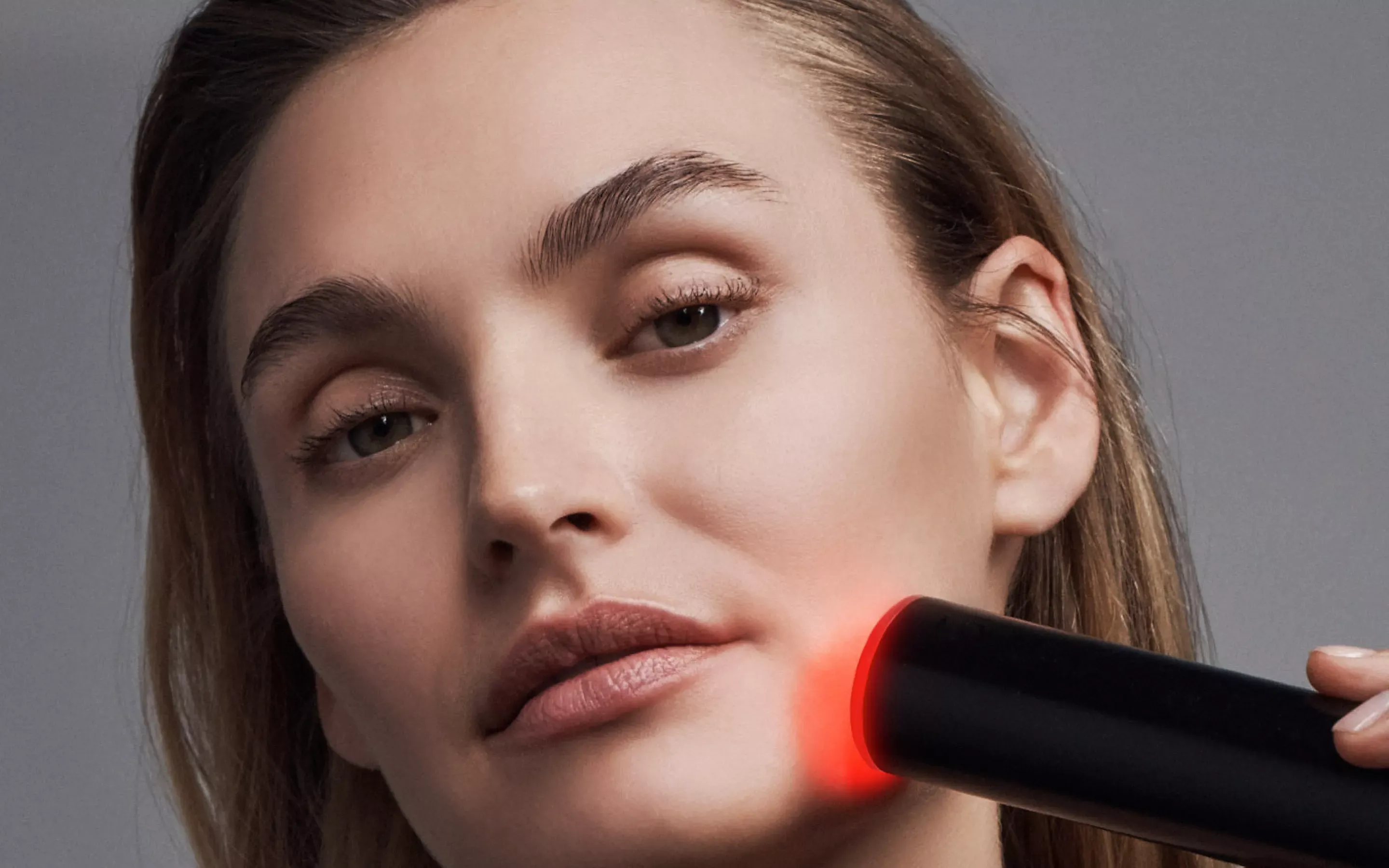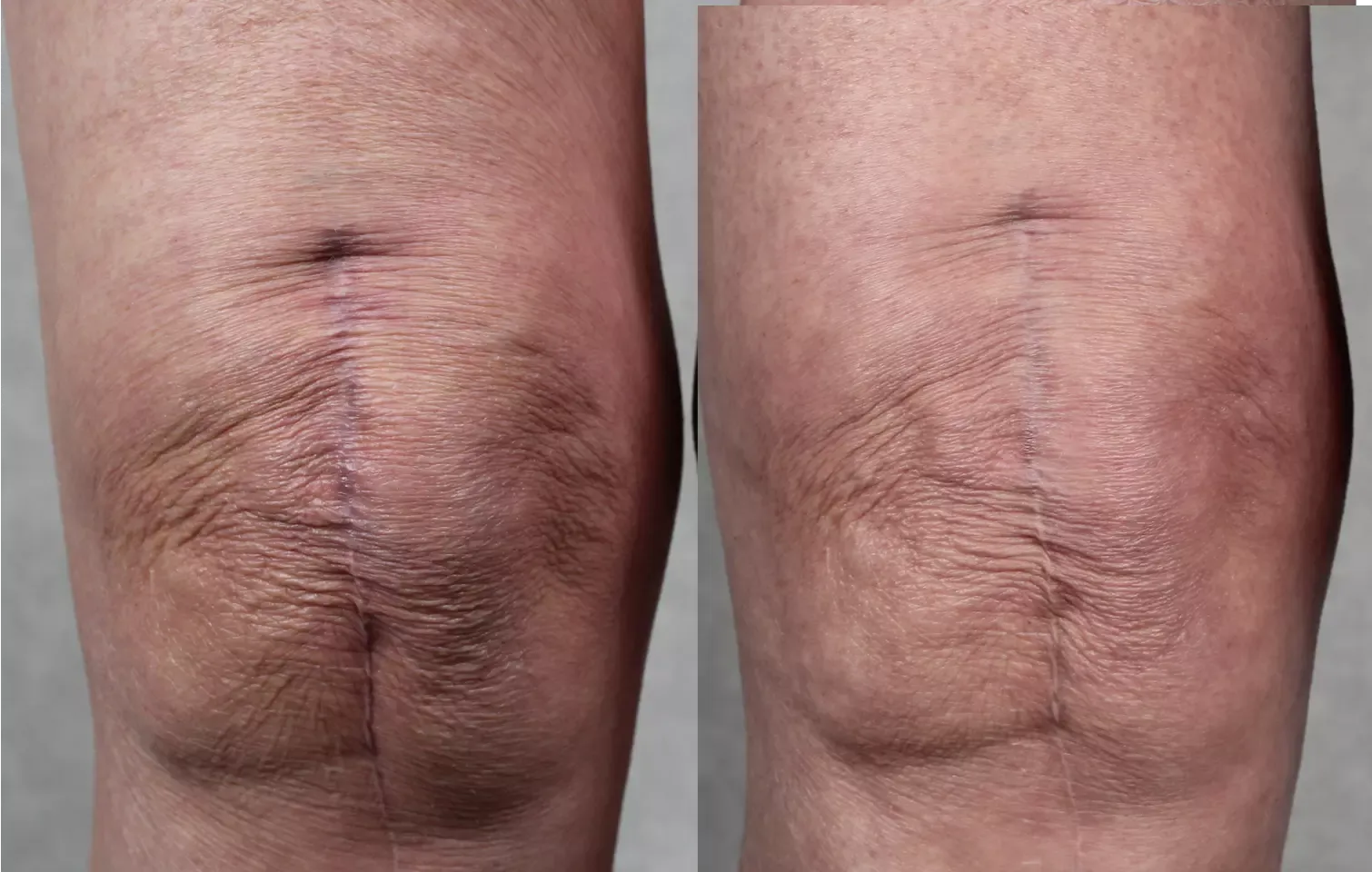4 Minute ReadHow To
06.11.20 (Updated 27.06.24)
A keloid scar is an overgrown or enlarged scar that tends to be dark, raised and can be pink, red or purple in colour. Keloid scars usually develop in response to minor skin damage, such as a blemish or a piercing. They do, however, tend to spread beyond the original area of skin damage and can become very large.
Many people with keloid scarring find that their confidence suffers as a result but help is at hand with low level therapy lasers. The LYMA Laser System represents a new dawn for at-home keloid removal and is the first clinic-grade at-home cosmetic device able to transform keloid scars from raised and dark to flat, comfortable and smooth.
This Laser can be used effectively on all manner of scars - including acne scars and cesarean scars - and works on all skin types and tones. No matter how dark your skin is, the LYMA Laser can help to eliminate scarring effectively and safely and with zero pain or side-effects.
Most of us have experienced scarring in one form or another - whether as a result of an accident or of trauma to the skin during a medical procedure or birth. But what exactly causes scarring? And how does LYMA helps to reverse the scarring process, leaving your skin looking as good as new?
Scarring, put simply, is the body’s natural repair response in the case of trauma or injury. The ‘recipe’ for scarring works like this:
Step one: inflammation. Lasting just a few days, inflammation triggers your immune system to jump into action, initiating your innate repair process.
Step two: proliferation. Cells accumulate around the injured or traumatised site and a scar is formed. This continues for around 28 days.
Step three: remodeling. After about a month, the biological process of changing the scar from a raised, red scar into a soft, flat scar begins. This can continue for years and is why scars can become less noticeable over time. Think of it as assimilation.

As you age and your skin loses collagen and resilience, new scars can take longer to remodel and can end up looking more severe than those that developed before the age of 35. In fact, even during your twenties your skin begins to produce less collagen and elastin. This dearth of skin-supporting cellular production results in less plump, more wrinkled skin, and also in a slower natural response to injury or trauma.
The formation of a healthy and smooth scar relies on cellular energy production. As we age, our immune response declines, resulting in a reduced supply of nutrients to the skin, as well as impaired circulation and insufficient oxygen to the skin’s surface; all of which are essential for cellular energy production.
Fibroblasts are effectively the engines driving the skin’s cellular energy production. Powered-up, efficient, fibroblasts are essential for the successful and complete proliferation of wound healing. Without optimised fibroblasts, the skin will struggle to accumulate the necessary material to form the scar tissue in the first place, and wound healing can become protracted and ineffective. An unsuccessful proliferation phase will lead to a more obvious keloid scar that is likely to be darker in colour and more textured, and is more likely to spread beyond the original trauma site.

The LYMA Laser offers a revolutionary way to improve the texture and appearance of keloid scars from the comfort of your home in just a few weeks. This laser revitalizes and rejuvenates skin cells from the inside out, evening out scar tissue and reducing pigmentation to match the surrounding skin.
For best results, combine the laser with our complimentary LYMA Oxygen Mist & Glide that you will find in your Starter Kit. Use the laser for just three minutes per day on each section of the scar. This regimen accelerates skin remodeling by increasing nutrient supply, improving circulation, and speeding up the repair process. Over time, you'll see a dramatic improvement in your scar's look and feel.
The LYMA Laser is revolutionary in that it is the only at-home protocol that has a beneficial effect on all three stages of scarring, working directly on fibroblasts to alter implicit growth factors. The LYMA Laser uses photobiomodulation: a concentrated laser beam that diffuses a tiny pinprick of light over a large surface area of skin, stimulating and enhancing cell function. The result is a profound upgrading of the scar’s ‘recipe’.
When the scar’s "recipe" is changed during the inflammation or proliferation stage of scar development, the product of the scar changes too, resulting in a flatter, smoother and less visible scar.
The LYMA Laser is not only effective against scarring, it can also be applied to skin to smooth wrinkles and reduce visible signs of aging, prevent and reduce cellulite, heal bruising, diminish skin redness, and even-out pigmentation.
The LYMA Laser is truly groundbreaking and represents the single best investment you could ever make when it comes to your skin.
Prior to The LYMA Laser it was impossible to remove keloid scars at home. Until now, laser light and LED have represented a gold standard when it comes to at-home scar removal, and clinic-grade performance has only been available to those with caucasian colouring. Now, with the LYMA Laser, at-home laser treatment has become totally inclusive and effective no matter your skin tone.
The LYMA Laser has been heralded the most significant skincare launch in a generation. It is a world first. Nothing with this level of transformative power, suitable for home use, has ever been seen before. Portable, powerful and painless: the LYMA Laser changes everything.